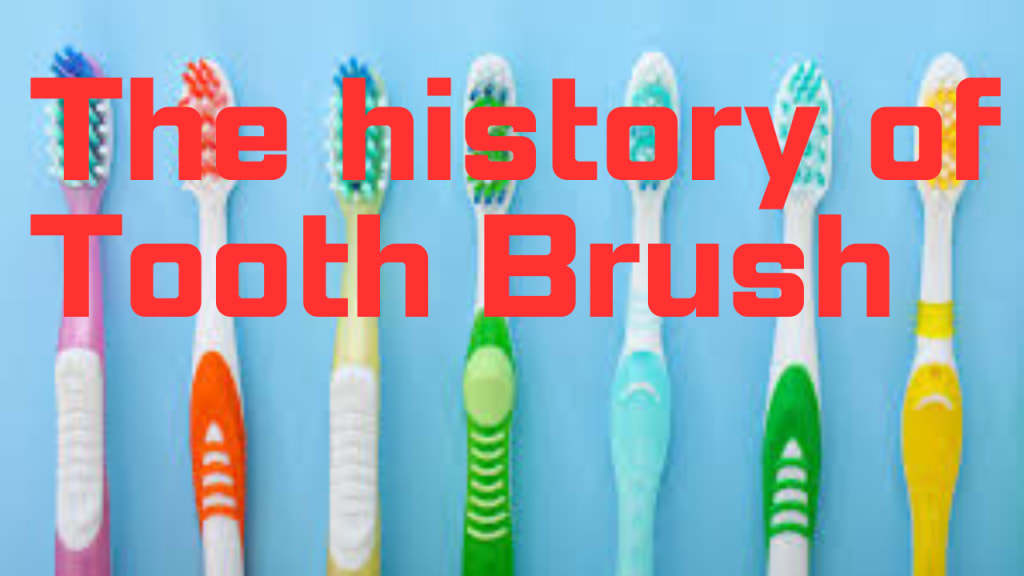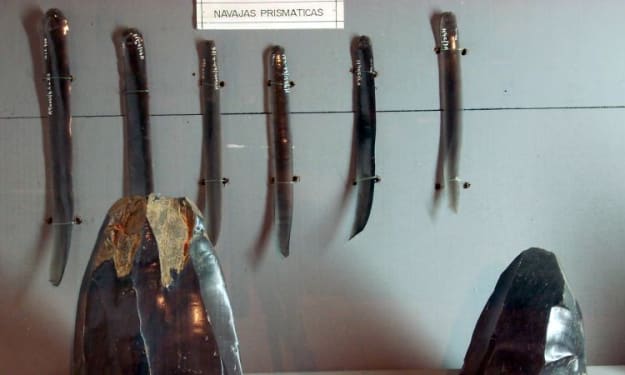Content warning
This story may contain sensitive material or discuss topics that some readers may find distressing. Reader discretion is advised. The views and opinions expressed in this story are those of the author and do not necessarily reflect the official policy or position of Vocal.

The History of Toothbrush
The toothbrush, a small but essential tool in our daily oral hygiene routine, has a rich and fascinating history that spans thousands of years. From humble beginnings to modern innovations, the evolution of the toothbrush showcases the ingenuity and dedication of human civilization in maintaining dental health.
Ancient Origins
The concept of oral hygiene can be traced back to ancient civilizations, where the need for clean teeth and fresh breath was recognized. As early as 3000 BCE, the ancient Egyptians used frayed twigs as rudimentary toothbrushes. These twigs, known as chew sticks, were used to clean the teeth and massage the gums. Similarly, ancient Greeks and Romans also practiced oral hygiene using chew sticks made from various plants and tree barks.
The Chinese Contribution
One of the most significant milestones in the history of the toothbrush can be attributed to the Chinese. Around the 7th century, during the Tang Dynasty, the Chinese began using bristle toothbrushes. These early versions featured handles made from bamboo or bone, with bristles made from the stiff hair of boars or horses. The bristles were attached to the handle, creating a more effective tool for cleaning teeth.
European Evolution
The concept of the toothbrush gradually spread to Europe during the Middle Ages. However, the bristles were initially made from softer materials such as feathers or animal hair. It was not until the 17th century that the design began to resemble the modern toothbrush we are familiar with today. In England, William Addis is credited with mass-producing the first modern toothbrush around 1780. The handle was made from cattle bone, and boar bristles were set into small holes drilled into the handle. This design was a significant improvement, offering a more comfortable grip and better control.
Industrial Revolution and Modern Innovation
The Industrial Revolution in the 19th century brought significant advancements to toothbrush manufacturing. With the advent of technology, toothbrush production became more efficient and affordable. Mass production allowed for the creation of toothbrushes with synthetic bristles, which were more hygienic and durable compared to natural alternatives.
In the 1930s, the first nylon toothbrush was introduced by Dupont de Nemours, revolutionizing the industry. Nylon bristles quickly gained popularity due to their superior cleaning capabilities and longer lifespan. Additionally, the introduction of ergonomic designs and various bristle patterns further improved the effectiveness of toothbrushes in reaching all areas of the mouth.
Modern toothbrushes have undergone numerous innovations and improvements. Electric toothbrushes emerged in the 1950s, offering rotating or vibrating brush heads that enhanced plaque removal and gum stimulation. These electric variants have continued to evolve with advanced features such as timers, pressure sensors, and different cleaning modes, catering to a wide range of individual needs and preferences.
Today, toothbrushes come in various shapes, sizes, and designs to accommodate individual preferences. Soft, medium, and hard bristle options are available to cater to different oral conditions and sensitivities. Manual toothbrushes are widely available and remain popular due to their simplicity and effectiveness, while electric toothbrushes continue to gain traction for their enhanced cleaning capabilities.
The Importance of Oral Hygiene
The evolution of the toothbrush highlights the recognition of the vital role oral hygiene plays in overall health. Regular brushing, along with flossing and routine dental check-ups, helps prevent tooth decay, gum disease, and other oral health issues. The toothbrush has become an essential tool in maintaining a healthy smile, promoting fresh breath, and contributing to overall well-being.
Proper brushing techniques and the use of appropriate toothbrushes can effectively remove plaque and debris, reducing the risk of cavities and gum disease. The bristles of modern toothbrushes are designed to reach all areas of
the mouth, including the difficult-to-reach spaces between teeth and along the gumline.
Aside from the physical benefits, the act of brushing teeth has become deeply ingrained in our daily routines and cultural practices. It symbolizes cleanliness, self-care, and social etiquette. Oral hygiene practices are taught from an early age, emphasizing the importance of caring for one's teeth and gums.
In recent years, the dental industry has witnessed further advancements in toothbrush technology. Smart toothbrushes equipped with sensors and Bluetooth connectivity have emerged, offering real-time feedback on brushing habits and promoting better oral care routines. These devices can track brushing time, pressure applied, and even provide personalized recommendations for optimal oral health.
The toothbrush has come a long way since its humble beginnings, evolving into a highly effective tool for maintaining oral hygiene. As our understanding of dental health continues to expand, so does the innovation surrounding toothbrushes. Researchers and manufacturers are constantly exploring new materials, designs, and technologies to enhance the cleaning power and user experience of toothbrushes.
In conclusion, the history of the toothbrush is a testament to human ingenuity and our commitment to oral health. From ancient chew sticks to modern electric toothbrushes, the evolution of this everyday tool highlights the progress made in dental care. The toothbrush plays a crucial role in preventing oral health issues, preserving our smiles, and contributing to overall well-being. So, the next time you pick up your toothbrush, take a moment to appreciate the journey it has taken to become the efficient dental instrument it is today.
About the Creator
Nizam malang
Nizam Malang: Passionate historian unraveling untold stories of the past, connecting historical events with fresh perspectives, and making history accessible for all.
Enjoyed the story? Support the Creator.
Subscribe for free to receive all their stories in your feed. You could also pledge your support or give them a one-off tip, letting them know you appreciate their work.






Comments
There are no comments for this story
Be the first to respond and start the conversation.